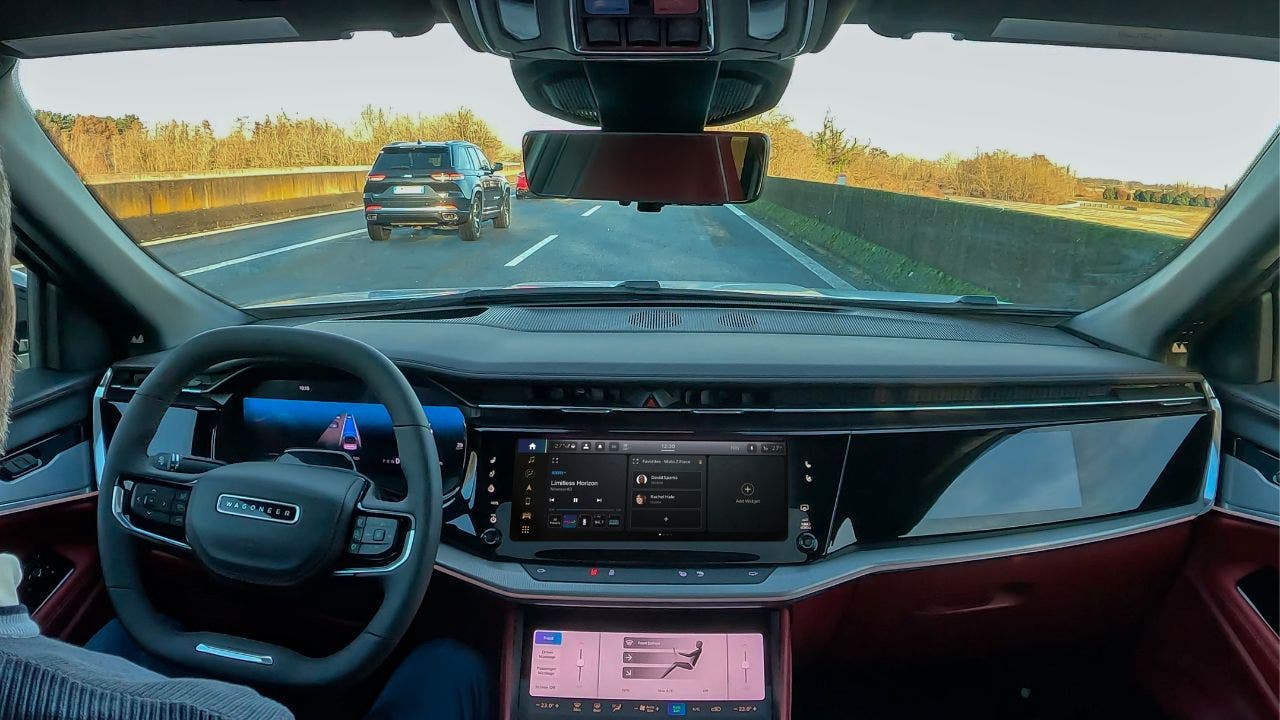Ready to drive without your hands on the wheel or eyes on the road?

```html
Stellantis' STLA AutoDrive 1.0: The Future of Driving, Almost Here
Hands-Free, Eyes-Off: A New Era of Commuting?
Imagine using your daily commute to catch up on your favorite show, respond to emails, or simply enjoy the scenery. This vision of the future is rapidly approaching thanks to advancements in autonomous driving. Stellantis, the automotive giant behind brands like Dodge, Jeep, and Chrysler, has unveiled its STLA AutoDrive 1.0 system, a technology poised to revolutionize how we drive.
This cutting-edge Level 3 automated driving system allows drivers to safely take their hands off the wheel and their eyes off the road, at least under certain conditions. At speeds up to 37 mph in traffic and on highways, STLA AutoDrive 1.0 can handle steering, acceleration, braking, and maintaining safe distances from other vehicles – all without human intervention.
Ready for Launch, But Waiting in the Wings
Despite being fully developed, Stellantis isn't launching STLA AutoDrive 1.0 just yet. Citing a limited market for Level 3 autonomous driving, the company plans to introduce the technology when consumer demand increases. This strategic pause highlights the complex interplay between technological innovation and market readiness.
The STLA AutoDrive Advantage
Several key features distinguish STLA AutoDrive 1.0. Its hands-free, eyes-off functionality at speeds up to 37 mph is a significant step towards full autonomy. The system is designed to function effectively at night and in light rain, showcasing its adaptability to various driving conditions.
Furthermore, an automated sensor-cleaning system ensures optimal performance. Built on a cloud-connected platform, the system can receive over-the-air updates, allowing continuous improvement and adaptability. Stellantis even hints at future upgrades, potentially enabling operation at higher speeds and even off-road automation.
Navigating the Challenges of Level 3 Autonomy
Level 3 autonomy, also known as "conditional automation," presents unique challenges. The system's reliance on specific environmental and traffic conditions requires drivers to remain alert and ready to take control instantly. This expectation of constant vigilance presents a potential hurdle for widespread adoption. Additionally, regulatory bodies face the complex task of establishing and enforcing safety standards for this evolving technology.
The Race to Autonomous Driving
Stellantis isn't alone in its pursuit of Level 3 autonomy. Mercedes-Benz achieved a milestone by launching an SAE Level 3 system in commercial vehicles in 2023. Other major automakers, including Honda, Ford, GM, and Volvo, are also heavily invested in developing similar systems, creating a highly competitive and rapidly evolving landscape.
Reshaping the Driving Experience
When STLA AutoDrive 1.0 finally hits the market, it has the potential to transform the driving experience. Imagine less stressful commutes in heavy traffic, with the freedom to relax or engage in other activities. Increased productivity and leisure time during travel are just some of the potential benefits. Enhanced safety through advanced sensors and AI could also lead to a reduction in human error and improved road safety overall.
The Road Ahead
Stellantis' STLA AutoDrive 1.0 represents a significant stride towards fully autonomous vehicles. While the technology is ready, the market and regulatory landscape are still catching up. As automakers continue to innovate, the future of self-driving cars draws nearer. Consumer acceptance and safety will ultimately determine how quickly Level 3 and beyond autonomous driving technologies become integrated into our daily lives.